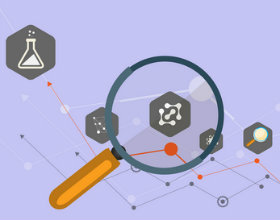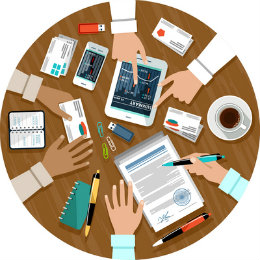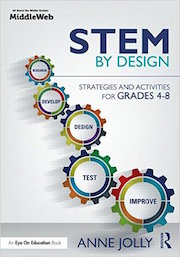Will ESSA & STEM Make a Happy Marriage?
A MiddleWeb Blog
 If you had three wishes for STEM education, what would those be? These are three of my priorities:
If you had three wishes for STEM education, what would those be? These are three of my priorities:
- Classrooms would be places of exploration, creativity, and discourse.
- Learning would be meaningfully connected to the world outside the school walls.
- Teachers would be prepared and empowered to design engaging STEM curricula and assessments.
If those are your wishes as well, then here’s some encouraging news!
On December 10, 2015, the Every Student Succeeds Act (ESSA) became the USA’s new federal education law. Many experts and advocates proclaim this legislation as a huge win for STEM. The law, which mentions STEM over 100 times, provides new funding streams for K-12 STEM education and gives states and districts new directions and opportunities to support integrated science, technology, engineering, and math education.
The new law allows federal funding for a number of STEM priorities. It includes an emphasis on improving instruction and student engagement in STEM by expanding high-quality STEM courses. It increases access to STEM for underserved and at-risk student populations and provides hands-on learning opportunities in STEM.

Will ESSA and STEM have a long and happy future together? Like our marriage vows, so much depends on implementation! But let’s take a closer look at some of the ESSA STEM provisions and see what might be in store.
STEM Specialty Schools
If you’ve been involved with starting a STEM school, you and others probably spent time discussing and determining what the school should teach and do.

Using that as a guide, school districts should be able to better design such schools and request funding to support those efforts. I hope we’ll see project-based learning and the engineering design process – both key elements of authentic STEM curriculum – firmly embedded in many more middle and high school programs.
STEM Professional Development
The new law places a great deal of importance on school faculty having a strong STEM foundation. Schools and school systems can use flexible funding to provide professional development and other systems of support for teachers, principals, and school leaders. The goal: Enable these educators to provide high-quality instruction and instructional leadership in STEM.
ESSA legislation also supports alternative certification for STEM teachers. States can use federal funds to “establish, expand, or improve alternative routes” for STEM teachers.
STEM Master Teacher Corps

In exchange for their services, these teachers will receive up to $20,000 more in salary each year. This differential pay will be, in part, a tool to enlist master teachers for high-need areas such as STEM and to entice them to teach in underserved schools.
Computer Technology
The new law elevates computer science to the level of a core academic subject and makes significant efforts to expand access to computer science to diverse populations, including underserved students. Funding can also be used to provide professional development that equips teachers with a strong foundation and skills in current technology. These teachers can then use cutting-edge technology to boost student achievement in STEM. (I recently heard a presenter assert that the lack of adequate Internet access by so many of our students rivals that of some third-world countries.)
Equity in STEM

STEM testing and assessment standards
Under the new law, states are required to maintain current standards and requirements around science and math testing. These are the salient points concerning the requirements:
Students must take yearly math tests in grades 3 through 8 and once in high school. They must take science tests three times between grades 3 and 12. Results will have to be publicly reported, but individual states can now determine what happens with those results.
- Funding will be available to allow states to update their science assessments by integrating engineering design skills and practices.
Afterschool and out-of-school STEM programs
ESSA allows funding for afterschool STEM and STEM-related education activities in other informal educational settings. States can also apply for grants for service-based and field opportunities, along with professional development and instructional materials for those STEM instructors.
In addition, ESSA instructs schools to improve the integration of programming and instruction in STEM by facilitating collaboration among the school, afterschool, and informal program personnel. Collaborative learning as a means of professional development and growth is another theme you can find throughout ESSA.
A new wave of optimism
What’s your school’s STEM focus going to be in the coming year? Check out the possibilities of support from ESSA. The passage of this legislation drives a new wave of optimism that STEM education in public schools will increase, improve, cross-pollinate, and thrive — optimism that our schools will turn out students prepared for needed STEM careers by deeply engaging them in project learning that blends engineering design with math, science and technology — optimism that students who select other career fields will also be more literate in 21st Century skills and more equipped to collaborate, create, innovate, and solve problems.
Some ESSA-STEM resources
I used several articles as a basis for this post, and you may find these useful:
A Corps of STEM Master Teachers from Change the Equation
ACM Hails New “Every Student Succeeds” Law by Jim Ormand
Coalition Analysis of Key STEM Provisions in ESSA by J. F. Brown
How afterschool STEM fared in ESSA by Anita Krishnamurthi
NCSSS supports signing of ESSA into law by Jennifer McNally
School Systems Get More Say on STEM Education by Liana Heitin
STEM Funding Streams Expanded in NCLB Rewrite by Liana Heitin
Federal Focus on STEM Improves with Passage of ESSA by Michael Kaspar
What Does ESSA Mean for You? by Dorothy Crouch

From the Amazon description: “This practical book…has all the answers and tools you need to get started or enhance your current program. Based on the author’s popular MiddleWeb blog of the same name, STEM by Design reveals the secrets to successful lessons in which students use science, math, and technology to solve real-world engineering design problems.”

 Students must take yearly math tests in grades 3 through 8 and once in high school. They must take science tests three times between grades 3 and 12. Results will have to be publicly reported, but individual states can now determine what happens with those results.
Students must take yearly math tests in grades 3 through 8 and once in high school. They must take science tests three times between grades 3 and 12. Results will have to be publicly reported, but individual states can now determine what happens with those results.





























STEM sound great but the schools in my area are treating STEM as stand-alone classes. They are spending lots of money on these FAB labs and teaching the kids how to use 3D printers, laser engravers, and vinyl cutters. I thought STEM was supposed to be all about the science, math, and engineering concepts. I think STEM should be integrated into the content areas utilizing real-world project-based activities and incorporating the tools to create a final product. My school has eliminated art in the elementary schools to create a STEAM class. The Jr. high school has eliminated all computer courses and replaced them with these STEM stand-alone courses. What are your thoughts?
Ron – you and I share the same view of what STEM is. In my opinion the printers, engravers, and cutters you describe are useful tools for many STEM projects, but simply teaching how to use tools and equipment does not equal teaching STEM.
Your definition of STEM is right on – integrating science, technology, engineering, and math to solve a real problem.
As far as eliminating art as a separate program in order to include it as a part of STEM . . . how is that going to work? STEM does naturally include art such as sketching, illustrating, designing attractive structures, and even designing marketing materials for the products kids create. But where will the kids learn how to sketch and illustrate? They need some direct art instruction for that, and STEM is not the place to TEACH art. It’s a great place to USE art. Does that make sense?
I don’t understand exactly what the Jr. High STEM program is, but the best possible look for STEM is for it to be integrated into the core curriculum. If technology is eliminated, where will kids learn how to use the cutting-edge programs they might need for working on solutions? And STEM courses are not the places to teach technology – it’s the place to use technology.
Anyway, keep the faith! STEM is a great initiative and in as far as possible it needs to be implemented with integrity.